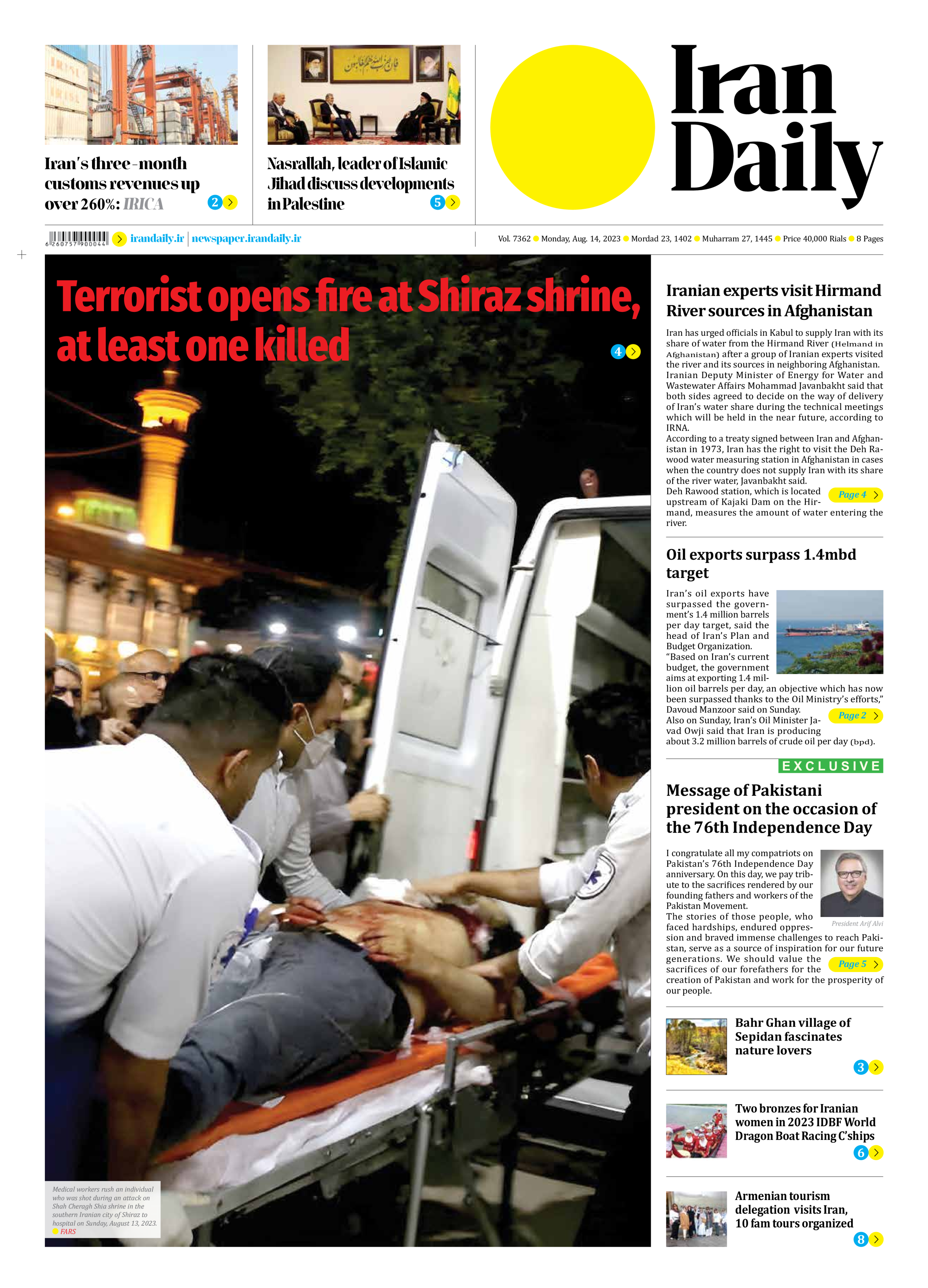
Iranian experts visit Hirmand River sources in Afghanistan
Iran has urged officials in Kabul to supply Iran with its share of water from the Hirmand River (Helmand in Afghanistan) after a group of Iranian experts visited the river and its sources in neighboring Afghanistan.
Iranian Deputy Minister of Energy for Water and Wastewater Affairs Mohammad Javanbakht said that both sides agreed to decide on the way of delivery of Iran’s water share during the technical meetings which will be held in the near future, according to IRNA.
According to a treaty signed between Iran and Afghanistan in 1973, Iran has the right to visit the Deh Rawood water measuring station in Afghanistan in cases when the country does not supply Iran with its share of the river water, Javanbakht said.
Deh Rawood station, which is located upstream of Kajaki Dam on the Hirmand, measures the amount of water entering the river.
Following more than a century of rifts, the two countries signed a treaty in 1973 to establish a means of regulating their use of the river.
Iran must receive an annual share of 820 million cubic meters from the Hirmand under the accord, which Afghanistan has grossly violated in letter and spirit, endangering the lives of many Iranians who rely on Hamoun wetlands for drinking water, agriculture, and fishing.
Iran recently rejected the Afghan claim of water shortage by publishing satellite images of water behind the dams built on the Hirmand.
“According to the [1973 Helmand River] Treaty, we can verify the other side’s claim of water shortage,” Iran’s special envoy on Afghanistan affairs Hassan Kazemi-Qomi said in an interview on Sunday.
During a visit to Sistan and Baluchestan back in May, Iranian President Ebrahim Raeisi warned Afghanistan rulers that Tehran will in no way tolerate a violation of the rights of the people of the province.







